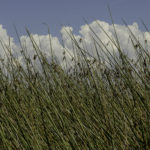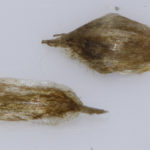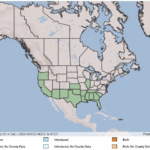Schoenoplectus californicus (Scirpus californicus)
USDA, NRCS. 2018. The PLANTS Database (http://plants.usda.gov, 28 March 2018). National Plant Data Team, Greensboro, NC 27401-4901 USA.
Illustration courtesy of University of Florida/IFAS Center for Aquatic and Invasive Plants. Used with permission.
What is California Bulrush?
Physical Characteristics
Leaves:
- Few
- Mostly open brownish covers
- Primary bract looks like part of the stem
- Bracts 0.75-2.75 inches long
- Bracts shorter than the flower
- Scales about 0.13 inches long & egg-shaped
- Dark brown in color
Flowers:
- 1.5-4.72 inches long
- Usually drooping
- 50-100 spikelets
- Spikelets sword-shaped
- Spikelets 0.23-0.44 inches long
- 30-50 flowers per spikelet
- Brown
- Blooms in spring
Fruit:
- One seed
- Does not open to release seed when ripe
- Egg-shaped
- About 0.08 inches long
- Brown in color
- Flat or slightly bulging
Stem:
- Hollow stem
- Closely clustered
- 0.05-0.08 inches long
- 0.31-0.86 inches thick near the base
- 0.08-0.16 inches thick near the flower
- 6 to 12 feet tall
Where Does it Grow?
California bulrush can be found in mud and in the shallow water of ponds and lakes but can tolerate water up to several feet deep.
Pros and Cons of Bulrush
Submerged portions of all aquatic plants provide habitats for many micro and macro invertebrates. These invertebrates in turn are used as food by fish and other wildlife species (e.g. amphibians, reptiles, ducks, etc.). After aquatic plants die, their decomposition by bacteria and fungi provides food (called “detritus”) for many aquatic invertebrates. Seeds of bulrushes are consumed by ducks and other birds; while geese, muskrats, and nutria consume the rhizomes and early shoots.






